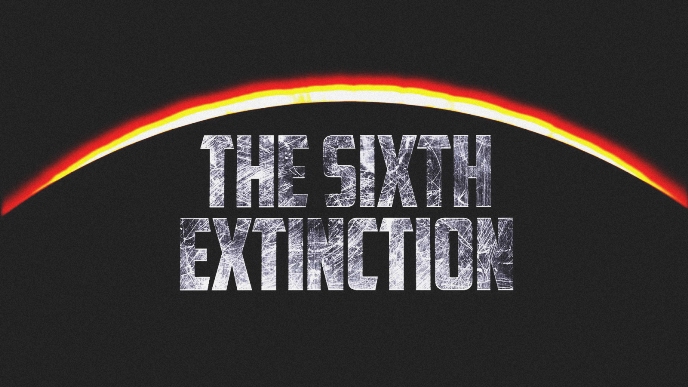Extinction
Extinction issues -- https://en.wikipedia.org/wiki/Extinction
http://www.nature.com/nature/journal/v471/n7336/full/nature09678.html
Species Extinction Threat Grows
○ ○ ○ ○ ○ ○ ○ ○ ○ ○ ○ ○ ○ ○ ○ ○ ○ ○ ○ ○ ○ ○ ○ ○
http://www.globalissues.org/article/171/loss-of-biodiversity-and-extinctions
https://www.iucn.org/iyb/about/biodiversity_crisis/
http://www.millenniumassessment.org/proxy/Document.354.aspx
○ ○ ○ ○ ○ ○ ○ ○ ○ ○ ○ ○ ○ ○ ○ ○ ○ ○ ○ ○ ○ ○ ○ ○ ○ ○ ○ ○ ○ ○ ○ ○ ○ ○ ○ ○
Habitat fragmentation and its lasting impact on Earth’s ecosystems / March 2015
“There are really only two big patches of intact forest left on Earth”
... the studies showed that when patches of forest become smaller and more isolated, the abundance of birds, mammal, insects and plants decreases in kind — those pressures reduced the species’ ability to persist... On average... fragmented forests lose more than half of their species within just 20 years; in the one experiment that’s still ongoing after more than two decades, the losses are continuing to compound.
○ ○ ○ ○ ○ ○ ○ ○ ○ ○ ○ ○ ○ ○ ○ ○ ○ ○ ○ ○ ○ ○ ○ ○ ○ ○ ○ ○ ○ ○ ○ ○ ○ ○ ○ ○
The Sixth Extinction by Elizabeth Kolbert, published February 2014
Wikipedia / Book: The Sixth Extinction
○ ○ ○ ○ ○ ○ ○ ○ ○ ○ ○ ○ ○ ○ ○ ○ ○ ○ ○ ○ ○ ○ ○ ○ ○ ○ ○ ○ ○
BIODIVERSITY -- https://en.wikipedia.org/wiki/Biodiversity
http://science.jrank.org/pages/861/Biodiversity-Species-richness-biosphere.html
THE BIOSPHERE
The biosphere is integral to the functioning of earth systems. First, the present atmosphere is the product of respiration on the part of plants, which receive carbon dioxide and produce oxygen. In addition, transpiration, a form of evaporation from living organisms (primarily plants), is a mechanism of fundamental importance for moving moisture from the hydrosphere through the biosphere to the atmosphere....
○ ○ ○ ○ ○ ○ ○ ○ ○ ○ ○ ○ ○ ○ ○ ○ ○ ○ ○ ○ ○ ○ ○ ○
http://www.biodiversitya-z.org/
http://www.biodiversitylibrary.org/
http://www.biodiversitymapping.org/visualizations.htm
https://www.cbd.int/gbo3/ - Convention on Biological Diversity
https://en.wikipedia.org/wiki/International_Union_for_Conservation_of_Nature
http://www.biodiversityassociation.org/
○ ○ ○ ○ ○ ○ ○ ○ ○ ○ ○ ○ ○ ○ ○ ○ ○ ○ ○ ○ ○ ○ ○ ○ ○ ○ ○ ○ ○
SMALL v LARGE SPECIES
Phytoplankton obtain energy through the process of photosynthesis and must therefore live in the well-lit surface layer (termed the euphotic zone) of an ocean, sea, lake, or other body of water. Phytoplankton account for half of all photosynthetic activity on Earth. Thus phytoplankton are responsible for much of the oxygen present in the Earth’s atmosphere – half of the total amount produced by all plant life. http://en.wikipedia.org/wiki/Phytoplankton
○
Marine Biodiversity Strongly Linked to Ocean Temperature
ScienceDaily (July 29, 2010) — In an unprecedented effort that will be published online on the 28th of July by the international journal Nature, a team of scientists mapped and analyzed global biodiversity patterns for over 11,000 marine species ranging from tiny zooplankton to sharks and whales. The researchers found striking similarities among the distribution patterns, with temperature strongly linked to biodiversity for all thirteen groups studied. These results imply that future changes in ocean temperature, such as those due to climate change, may greatly affect the distribution of life in the sea.
http://www.sciencedaily.com/releases/2010/07/100728131707.htm
○
LARGE "CHARISMATIC" SPECIES
https://en.wikipedia.org/wiki/The_world's_100_most_threatened_species
The standard approach, when looking at threatened species, is to focus on well-known larger species.
These are often called the 'charismatic' or 'iconic' species, versus the rarely considered 'worthless' species or the species that are not even 'known', or known to be in danger ... The reality is that much of the extinction in our era is of the small species, the lesser known, the unknown and unconsidered species... whether in the rich biospheres of the rainforest or the oceans, the micro-organisms are at risk and in peril of collapse.
When we speak of plankton, as a profoundly critical keystone species, the food chain of the oceans begins with plankton, yet the disruption of the atmosphere and the heating of the ocean, or acidification, will have great consequences to the phytoplankon flagellates, who cannot move with their limited locomotion system... the increases of heat or strengthened suns rays due to changes in atmospheric conditions, and UV radiation, can have deadly consequences.
If the food chain is disrupted, endangered and/or destroyed, the rest of the food chain, the connectivity between species, will be disrupted, endangered, and/or destroyed.
This is a great challenge of the era in which we live... loss of biodiversity and a 'ripple effect' over time, a threat environment that demands strategic environmental security as a key goal, as a policy objective of awareness and sustainability.
○
